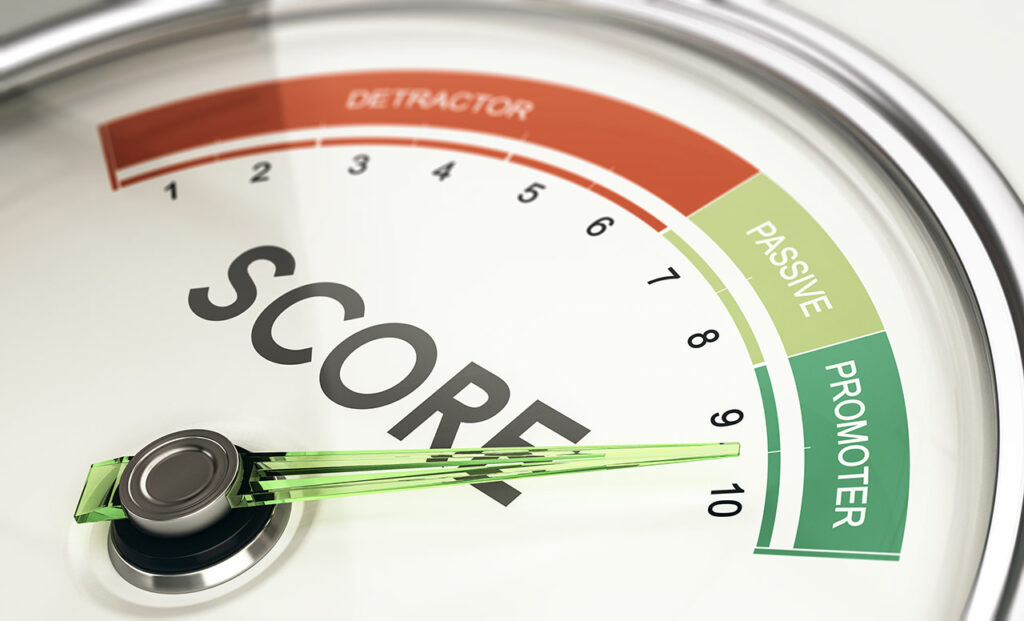Method 1: Conduct customer surveys
Create targeted customer surveys to gain precise insights into the views of your customers.
Use a variety of question types including multiple-choice questions, open-ended questions and rating scales to get a comprehensive range of feedback.

Focus on specific aspects such as the quality of your products, customer service, delivery times and other relevant areas.
This targeted approach provides you with a comprehensive basis for analyzing customer satisfaction and allows you to work specifically on the areas that are particularly important to your customers.
Always keep a keen eye on social media platforms and online review sites to track down customer comments.

Delve into both positive and negative feedback to identify patterns and recurring themes.
This will not only allow you to better understand the general sentiment of your customers, but also to target areas that are perceived as particularly positive or negative.
This continuous monitoring opens up the opportunity to proactively address customer needs and constantly improve the overall image of your brand.
Method 3: Direct interaction with customers
Maintain a multi-faceted exchange with your customers via various communication channels, be it emails, phone calls or face-to-face meetings.
This variety of contact allows you to create a comprehensive connection with your customers.
Direct customer meetings in particular offer an excellent opportunity to gain deeper insights and clarify individual concerns on a personal level.
This not only enables stronger customer loyalty, but also opens up the opportunity to offer tailor-made solutions and improve the customer experience in the long term.
Method 4: Use metrics for customer satisfaction
Use precise metrics such as Net Promoter Score (NPS), Customer Effort Score (CES) or Customer Satisfaction Score (CSAT) as powerful tools for quantitative measurement.

Define clear benchmark targets that serve as a measure and carefully track progress over time.
This targeted use of measurement tools not only gives you insights into customer satisfaction, but also allows you to accurately analyze and continuously optimize the effectiveness of your strategic measures.
Method 5: Analyze complaint and return statistics
Carefully analyze information on customer complaints and returns to precisely identify patterns and recurring problems.
Use these findings as a basis to derive targeted measures and effectively resolve problems.

By acting proactively, you can not only minimize customer frustration, but also ensure that your products or services always meet the highest quality standards, which in turn contributes to a sustainable increase in customer satisfaction.
Method 6: Include employee feedback
Integrate the perspective of employees who are in direct contact with customers by asking them for their views on customer needs and expectations.
Employees’ experiences can provide valuable insight into areas that may need improvement.
By taking their insights into account, you not only create a more comprehensive understanding of the customer perspective, but also promote teamwork and help to ensure that all aspects of the customer experience can be optimized.
Method 7: Compare with industry standards
Conduct an in-depth analysis to determine how your customer satisfaction scores compare to industry standards.
This objective comparison allows for a comprehensive assessment and identifies clear areas for potential improvement.

By understanding your position in relation to industry standards, you can work on targeted measures to continuously increase customer satisfaction and secure an outstanding position in your market segment.
Method 8: Create regular reports and summaries
Create regular reports and summaries of customer satisfaction data to ensure a clear overview of developments.
Share this valuable information with relevant departments to work together on targeted improvements.
This transparent communication not only promotes a shared understanding of customer needs, but also creates a basis for collaborative initiatives to continuously increase customer satisfaction.
Conclusion: Combine different methods for a more comprehensive picture
Analyzing customer satisfaction by applying different methods is an essential step for companies that want to ensure their long-term success.
The 8 methods presented in this article not only provide a comprehensive view of customers’ current needs and expectations, but also enable companies to proactively respond to changes and continuously improve their services or products.
From targeted surveys to monitoring social media platforms to incorporating employee feedback, each method plays a crucial role in creating a comprehensive understanding of customer satisfaction.
By consistently applying these methods, companies can not only strengthen their position in the industry, but also build a loyal customer base that has a positive impact on the company’s success.
Ultimately, investing in customer satisfaction analysis underlines the relevance of a customer-centric strategy and positions companies optimally to master the constant changes in the market and maintain successful customer relationships in the long term.
More about Customer Satisfaction
- Everything you need to know about customer satisfaction
- How to prioritize customer satisfaction measures
- 8 (atypical) measures to improve customer satisfaction
- Proving customer satisfaction with key performance indicators
- 8 reasons why increasing customer satisfaction doesn’t work!
- How you can measure the level of customer satisfaction
- Customer Satisfaction and Customer Loyalty: correlation and differences
- Example structure of a customer satisfaction survey: structure for valuable insights
- Customer Satisfaction and Customer Retention: success factors for sustainable growth
- The most common questions in the area of customer satisfaction







